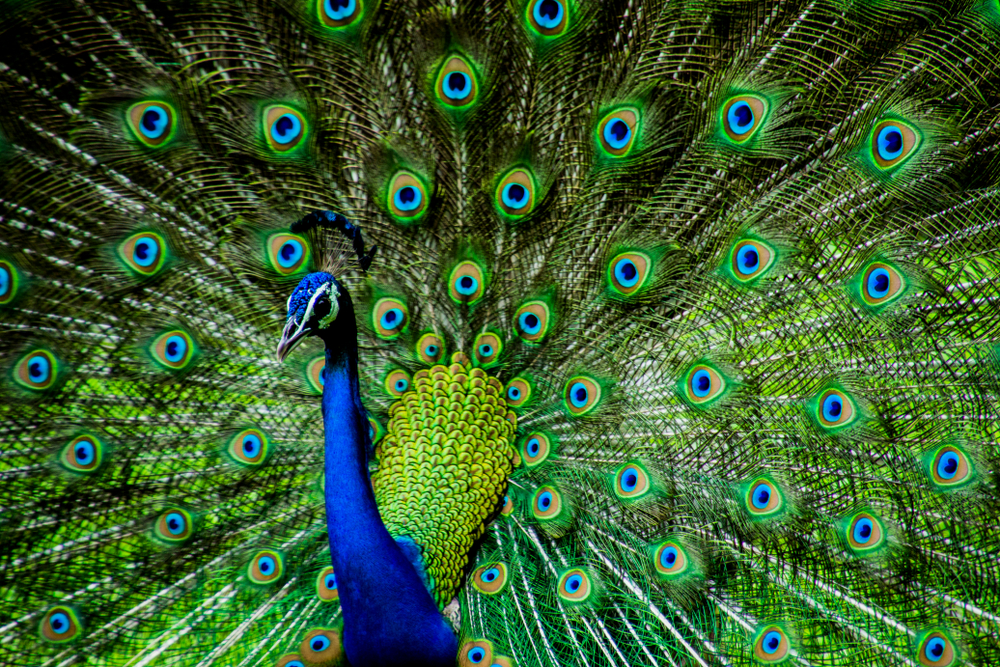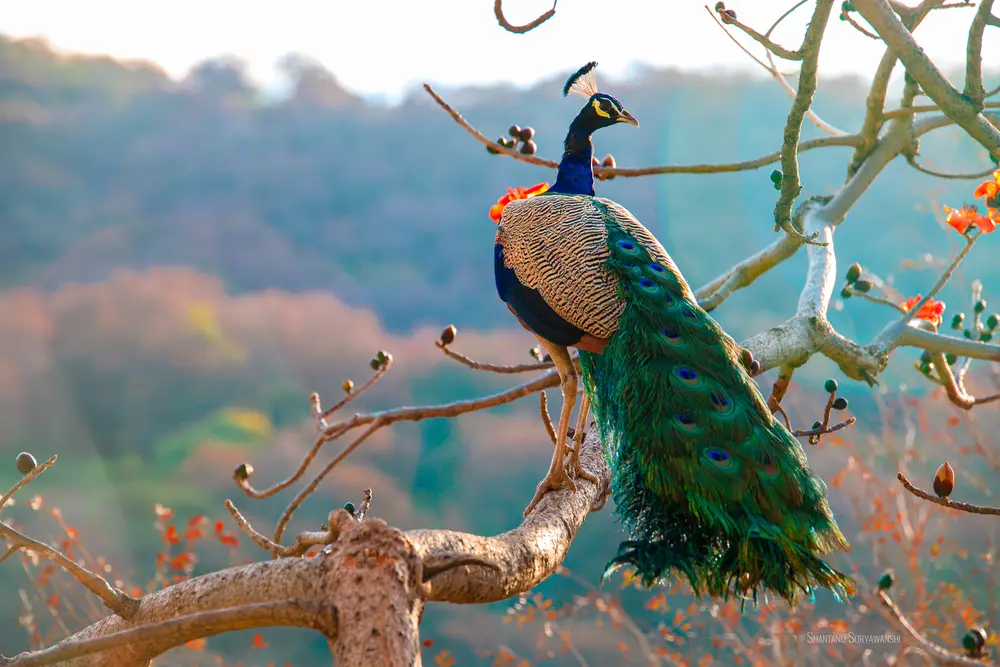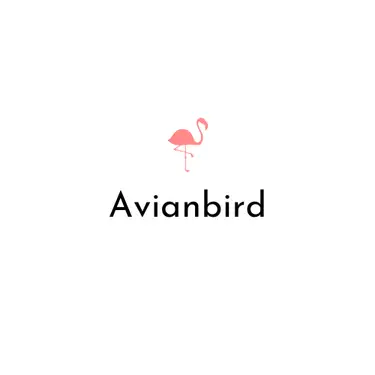The peacock is an iconic and awe-inspiring bird. Its iridescent feathers, with their unmistakable eyespots, are its most striking feature, earning the species a place in numerous cultures’ folklore for centuries.
Despite its grand appearance, there is much more to this bird than meets the eye; from its fascinating mating rituals to its versatile diet. This article will explore the natural history of the peacock and discuss some of the unique features that make it such an interesting species.
Peacocks have long been associated with royalty due to their impressive size and arresting beauty. Native to India and Sri Lanka, these birds inhabit woodland areas as well as cultivated land close to human habitation – meaning they can often be spotted by lucky observers!
Peafowls form highly social groups known as ‘parties’ which consist of one male flanked by two or three females and several juveniles. The males are easily distinguished from their female counterparts thanks to their large trains of feathers which span up to six feet in length when fully displayed. It is thought that these elaborate tails evolved in order to attract mates: courtship displays involve vigorous tail flapping accompanied by loud vocalizations designed to draw attention!
In addition to being aesthetically stunning creatures, peafowl also possess a diverse range of behaviors. These birds feed on both plant material such as fruits, grains and seeds as well as insects like grasshoppers and locusts – making them omnivores with varied diets!
They also spend time preening themselves regularly throughout the day in order to keep their feathers looking healthy and glossy. With greater understanding about this avian gem come even greater appreciation for its many remarkable qualities. In what follows, we will delve into additional aspects of the peacock’s lifestyle so readers may gain further insight into why this species has captivated us for centuries.

Taxonomy
Peacocks are members of the genus Pavo, part of the family Phasianidae. This family includes pheasants, turkeys, quail and guinea fowls. The species in this genus can be found across Africa, Asia and Europe – although only two species have been domesticated for ornamental purposes: Common Peafowl (Pavo cristatus) and Green Peafowl (Pavo muticus).
In terms of taxonomy, peacocks belong to a group known as Galliformes which also includes gamebirds and other terrestrial birds such as grouse and ptarmigans. Within this order there is further subdivision into families including Cracidae (guans), Odontophoridae (New World quails), Numididae (Guineafowls) and Megapodiidae (mound-builders).
Classification systems vary according to different sources but generally speaking, peacock classification places them within one of four genera: Pavo, Afropavo, Polyplectron and Chrysoena. Each genus contains its own set of subspecies with varying characteristics or geographic ranges that help distinguish them from each other.
Habitat And Distribution
The habitat of the peacock is extremely varied and far-reaching, ranging from open grassland to dense forests. Peacocks are native to Southeast Asia, South India, Bangladesh, Sri Lanka and Bhutan; however they have been introduced in other areas like Madagascar, Australia, United Kingdom and parts of the United States. They thrive in savanna and open woodland habitats with ample cover for resting during day time as well as roosting at night.
Peacocks inhabit a variety of climates including tropical dry forest regions up to subalpine meadows. Their geographic range also encompasses various types of ecosystems such as wetlands, deciduous forests and hillsides where it can find safety from predators or extreme weather conditions.
Large populations exist near agricultural land due to availability of food sources such as grains and insects that provide sustenance when natural food items become scarce. This adaptation has allowed them to survive in an ever changing environment by utilizing resources even outside their native ranges.
In addition to occupying a wide array of biomes across its native range, the peacock has successfully established itself in many non-native locations thanks to intentional introductions over several centuries. Currently this bird species occupies almost every continent on earth except Antarctica where environmental conditions make survival difficult if not impossible.
The spread of these birds has largely been aided by humans either through transportation or intentional releases into new environments which may or may not be suitable for them. Despite this increase in distribution some local populations remain vulnerable due to their restricted geographic range or threats posed by human activities like poaching or destruction of habitat.
It is evident that although originally found only within certain pockets of Southeast Asia, the peacock’s ability to adapt makes it possible for them to occupy diverse ecological niches across much wider geographical boundaries than were previously thought possible.
Physical Characteristics
The physical characteristics of the peacock are renowned for their beauty. This is due in part to its eye-catching feather patterns and iridescent colors, which can range from a deep green to blues and purples. The most recognizable feature of the bird is its fan shaped tail with feathers that have large colorful eyespots on them.
These ornate feathers form a spectacular train used by males during mating displays. Additionally, some peacocks also possess crests atop their heads that are made up of shorter feathers than those found on the body or tail.
Peacock plumage consists of two types: contour feathers and coverts. Contour feathers provide protection against climate elements such as wind and rain while creating aerodynamic shapes for flight. Coverts create an array of vibrant colors through their diverse sizes, shapes, lengths, and patterns when light reflects off them.
Iridescence plays a major role in making these birds so visually appealing; their bright hues give each individual’s appearance an almost surreal quality.
Males use their vivid display of coloration to attract females during courtship rituals, allowing them to show off their fitness levels and vigor as potential mates. Females typically choose mates based on size, plume length, number of ocelli (eye spots), health condition, grooming behavior and other physical attributes like strength and stamina before settling down with one mate for life.
Diet And Feeding Habits
The diet and feeding habits of peacocks are quite varied. They feed on a range of different food sources, from insects to vegetation, with the bulk of their diet consisting of grains, seeds, fruits and vegetables.
Peacocks primarily forage during the day in order to find food. Their diets can be divided into several categories depending upon which type of food is available in their habitat at any given time. Insects form an important part of their diet when they are able to locate them; however, by far their largest source of nutrition comes from plant material such as grasses, herbs and shrubs. Peacocks also consume smaller amounts of nuts and berries when these items become available.
| Food Source | Description | Availability |
|---|---|---|
| Insects | Beetles, caterpillars & spiders | Seasonal |
| Grasses | Green leaves & stems | Year-round |
| Herbs | Leaves & flowers | Seasonal |
| Shrubs | Fruits & twigs | Year-round |
| Nuts | Almonds, chestnuts & cashews | Seasonal/rare |
| Berries | Blueberries & raspberries | Seasonal/rare |
As seen above in the table containing information about some common food sources for peacocks, availability is dependent upon seasonality or rarity within their natural habitats. In general, peacocks have evolved to make use of whatever resources are most readily available in each particular environment where they reside. This helps them survive through periods of both feast and famine with relative ease.

Reproduction And Lifespan
Peacocks are polygamous in nature and breed annually. The breeding season for peacocks usually begins around late spring to early summer, with the males engaging in courtship rituals to attract females. These displays consist of loud calls from the males as well as fanning out their tail feathers to show off their vibrant colors. When a female is attracted by one of these displays, mating takes place.
The female peacock will lay her eggs between May and June, while the incubation period lasts approximately 28 days until hatching occurs. It should be noted that during this time, most male peacocks become rather aggressive towards other animals around them due to increased territorial behavior. Upon hatching, baby peacocks (or peachicks) gain independence very quickly; they can run and feed on their own within 24 hours after hatching.
Peacocks typically have a lifespan of 20-25 years when kept in captivity; however, wild peacocks often live shorter lives because of predators or environmental changes such as drought or disease outbreaks which can drastically reduce population numbers. Therefore proper care must be taken by zookeepers and conservationists alike if we are to continue enjoying this magnificent species for many more generations to come.
Social Behavior
Peacocks, members of the genus Pavo in the Phasianidae family, are renowned for their social behavior. They display a range of collective behaviors to interact and remain part of the group. These include:
- Flocking behavior – Peafowls typically travel together in flocks, seeking safety from predators and searching for food sources. This gives them an opportunity to form meaningful relationships with other peacocks within the flock.
- Social Hierarchy – Each peafowl has their own place in the hierarchical structure amongst others of its species or even between different species when they coexist. Within this hierarchy, individuals will compete for resources and mates by displaying courtship rituals, mating displays, and aggressive posturing towards rivals or potential competitors.
- Group Dynamics – Peacocks communicate through sound as well as visual signals such as head bobs and tail flicks to maintain order within the flock while also forming alliances with one another that can help protect against external threats. The size and composition of a given group may vary depending on environmental factors but generally consists of two adult males (peahens) accompanied by several younger birds who stay close to each other throughout most activities including feeding and roosting times.
In addition to these behaviors which enable peacock populations to survive hostile conditions, they also engage in playful interactions with one another during non-stressful situations such as preening or dust bathing; these acts provide further evidence that peacock communities have complex social dynamics beyond simple survival strategies.
Conservation Status
The conservation status of peacocks is precarious, with many species considered endangered or vulnerable. Though most peafowl have been domesticated and thus not subject to endangerment, their wild counterparts are increasingly threatened due to habitat destruction and human encroachment.
| Species | Conservation Status | Captive Breeding? |
|---|---|---|
| Green Peacock (Pavo muticus) | Endangered | Yes |
| Indian Peafowl (Pavo cristatus) | Vulnerable | No |
| Congo Peafowl (Afropavo congensis) | Critically Endangered | Yes |
In order to protect the remaining wild populations of these birds, numerous conservation efforts have been initiated in recent years. Through captive breeding programs, zoologists hope that more individuals can be reintroduced into the wild in order to boost dwindling numbers. In addition, global warming has caused many natural habitats for these creatures to become inhospitable, leading some researchers to advocate for the creation of new protected areas specifically designed for them.
Though much work remains ahead before peacocks make a full recovery from population decline and potential extinction, it is encouraging that so much attention has already been brought to this issue by wildlife organizations around the world. With continued dedication and effort on behalf of concerned citizens everywhere, we may someday see an increase in both awareness and action regarding the plight of peafowl going forward.
Conclusion
The Peacock is a magnificent and regal bird species that has been admired for centuries. It is unique in its physical characteristics, habitat requirements and behavior, making it an interesting study subject of ornithologists the world over.
This species plays an important role in many ecosystems, providing vital pollination services as well as assistance to other organisms with food sources such as seeds or insects. Its colorful plumage also serves to attract potential mates during the breeding season. Despite this, however, populations have decreased due to human-caused destruction of natural habitats which can reduce available resources like food and nesting sites.
Conservation efforts must continue if we are to protect these birds from further decline. Measures should include protection of their existing habitats as well as reintroduction programs into areas where they have become locally extinct. Such initiatives may help ensure that future generations will be able to appreciate the beauty of this iconic species for years to come.
